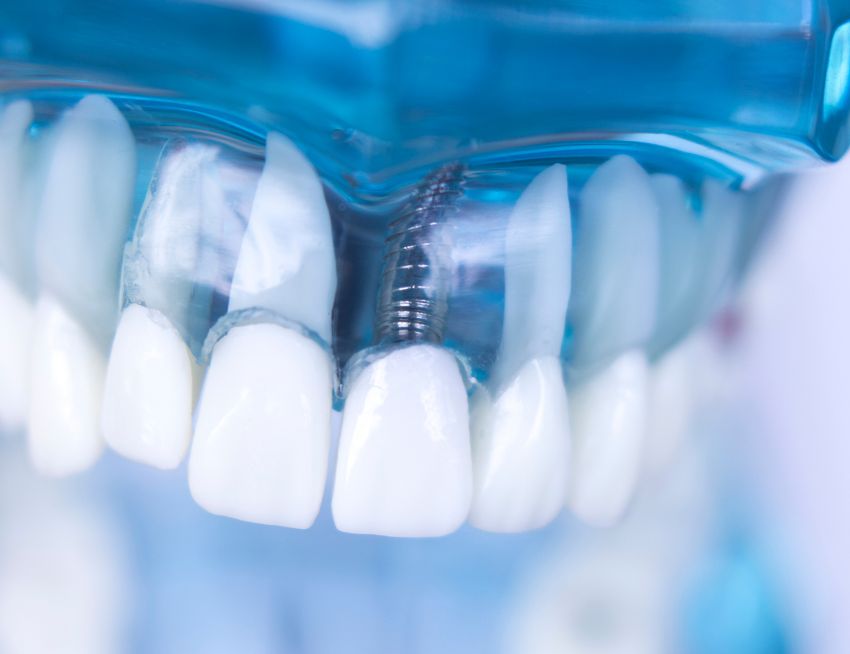If you are facing tooth extraction and implant surgery, you may be wondering what the timeline for this process looks like. Tooth extraction and implant surgery are common procedures that can improve your oral health and restore your smile. However, they can also be complex procedures that require careful planning and preparation. In this blog post, we’ll discuss the timeline for tooth extraction and implant surgery, so you know what to expect.
Tooth extraction and implant timeline
1. Tooth extraction
The first step in the tooth extraction and implant timeline is the removal of the damaged or decayed tooth. This process can vary depending on the complexity of your case, but in general, it involves the following steps:
- Anaesthesia: You will receive local anaesthesia to numb the area around the tooth.
- Tooth removal: The dentist or oral surgeon will use specialized tools to carefully remove the tooth from its socket in the jawbone.
- Stitches: Depending on the case, stitches may be needed to close the gum tissue.
Before the extraction, your dentist or oral surgeon will conduct a thorough examination of your teeth and gums, as well as take x-rays to determine the best course of action.
After the extraction, it’s important to follow your dentist’s instructions for aftercare. This may include avoiding hard or crunchy foods, taking pain medication as prescribed, and keeping the extraction site clean.
While it may seem daunting, advances in dental technology and anaesthesia make the process more comfortable than ever before. By following your dentist’s instructions for aftercare, you can ensure a smooth recovery and pave the way for successful implant surgery.

2. Implant surgery
The next step in the tooth extraction and implant timeline is implant surgery. This involves placing a titanium post in the jawbone to serve as a replacement for the missing tooth root. This process usually involves the following steps:
- Anesthesia: You will receive local anesthesia to numb the area where the implant will be placed.
- Implant placement: The dentist or oral surgeon will create a small incision in the gum tissue and carefully place the implant in the jawbone.
- Healing: After the implant is placed, the healing process begins. It can take several weeks to several months for the implant to fuse with the surrounding bone tissue.
Dental implant healing time
One of the most important aspects of the tooth extraction and implant timeline is the healing time.
After the implant is placed in the jawbone, the healing process begins. This process is known as osseointegration and involves the implant fusing with the surrounding bone tissue.
The dental implant healing time can vary depending on several factors, including the quality and quantity of the bone tissue, the location of the implant, and the individual patient’s healing process. In general, the healing time can range from several weeks to several months.
During the healing process, it’s important to avoid putting any undue stress on the implant. This means avoiding hard or crunchy foods, as well as any habits like smoking that can impede the healing process. Your dentist or oral surgeon will provide specific instructions for aftercare and may recommend using a special mouth rinse to help keep the implant site clean.
As the implant fuses with the bone tissue, it becomes more stable and able to support the artificial tooth or restoration. Your dentist or oral surgeon will monitor the healing process with regular check-ups and x-rays to ensure that the implant is progressing as it should.
Once the healing process is complete, your dentist or oral surgeon will expose the implant screw and attach an abutment to the implant post and then attach a custom-designed crown or bridge to the abutment. The final result is a natural-looking artificial tooth that functions just like a natural tooth.
In conclusion, the dental implant healing time is an important part of the tooth extraction and implant timeline. While the length of time can vary depending on several factors, following your dentist’s instructions for aftercare can help to ensure a successful outcome. By taking the time to allow the implant to heal properly, you can enjoy the benefits of a restored smile and improved oral health for years to come.
3. Restoration
The final step in the tooth extraction and implant timeline is the placement of the artificial tooth, or restoration. This involves attaching an abutment to the implant post and then attaching a crown or bridge to the abutment. The restoration is custom-designed to match your existing teeth for a natural-looking result. At this stage you can select the crown type, size, shape and colour.

Considering the timeline, should you get dental implants in Hungary?
Deciding whether to get dental implants in Hungary or elsewhere is a personal decision that depends on several factors, including your individual needs, budget, and preferences.
Hungary has become a popular destination for dental tourism, and for good reason. The country has a well-developed dental industry and is home to many highly skilled and experienced dentists and oral surgeons who can provide quality dental care at a more affordable price compared to some other countries.
If you are considering getting dental implants in Hungary, it’s important to do your research and choose a reputable dental clinic or practitioner. Look for reviews and testimonials from previous patients, and make sure that the clinic adheres to strict hygiene and safety standards.
You should also consider the logistics of traveling to Hungary for dental care. This may include arranging travel and accommodations, as well as taking time off work or other commitments.
Ultimately, the decision to get dental implants in Hungary or elsewhere should be based on a careful consideration of all the factors involved. Your dentist or oral surgeon can help you weigh the pros and cons of each option and make an informed decision based on your individual needs and circumstances.
Closing thoughts
Overall, the tooth extraction and implant timeline can vary depending on your specific case. However, the entire process typically takes several months to complete, with the majority of that time devoted to healing and osseointegration (the process of the implant fusing with the bone tissue). It’s important to follow your dentist’s instructions for aftercare and attend all follow-up appointments to ensure the success of your implant surgery.
In conclusion, tooth extraction and implant surgery can be a complex process, but the end result is a restored smile and improved oral health.
Understanding the timeline for these procedures can help you prepare and know what to expect. If you are considering tooth extraction and implant surgery, talk to your dentist or oral surgeon to learn more about the process and whether it’s right for you.
Unlock the Secret to Affordable Dental Implants in Hungary! Get our free PDF guide today.


